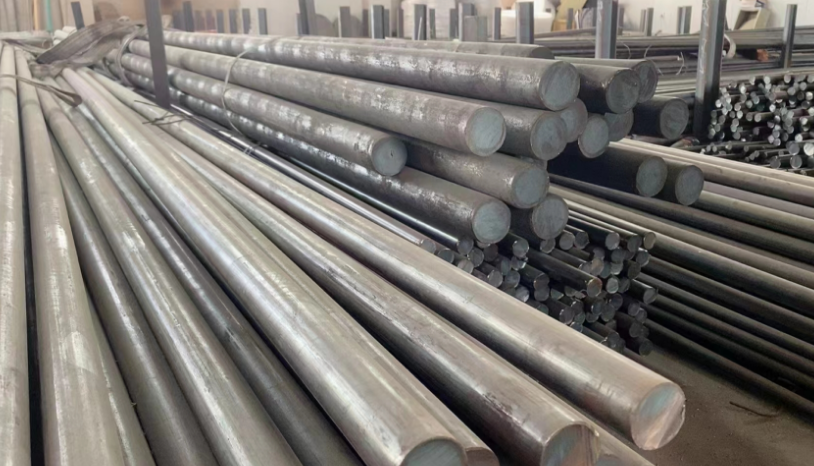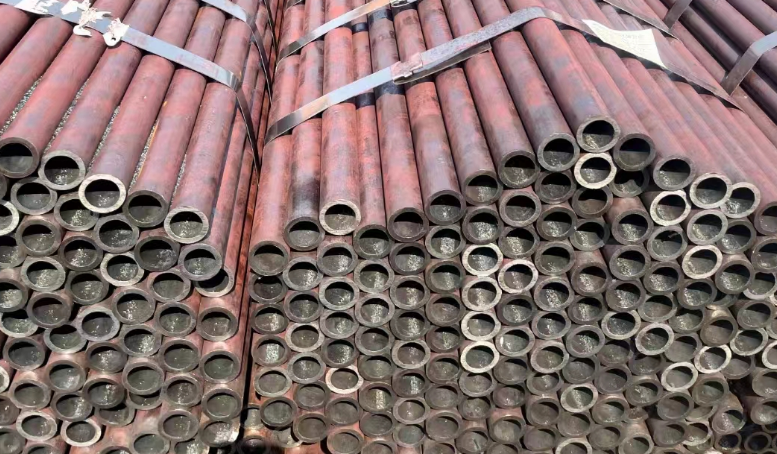Both 6150 steel and 4140 steel are widely used in a range of industrial applications due to their unique properties, but there are some key differences between them. So, 6150 Steel vs 4140 – what’s the difference? In this article, we will delve into the details of 6150 steel and 4140 steel, comparing their composition, mechanical properties, heat treatment, and end-use applications.

6150 Steel vs 4140 – What’s the Difference?
6150 Steel vs 4140 – 1. Composition
Let’s start with the basic composition of these two steels.
6150 steel, also known as AISI 6150 or UNS G61500, is a chromium–molybdenum-vanadium alloy steel. It typically contains around 0.55-0.65% carbon, 0.80-1.10% chromium, 0.15-0.25% molybdenum, and 0.10-0.20% vanadium. The addition of chromium and molybdenum increases the steel’s resistance to corrosion and wear, while vanadium improves its hardness and strength.
On the other hand, 4140 steel, or AISI 4140, is a chromium-molybdenum alloy steel. It typically contains around 0.28-0.40% carbon, 0.80-1.10% chromium, and 0.15-0.25% molybdenum. 4140 steel lacks the vanadium content of 6150 steel, resulting in different mechanical properties and heat treatment characteristics.
6150 Steel vs 4140 – 2. Mechanical Properties
The mechanical properties of 6150 steel and 4140 steel vary slightly due to their different compositions.
6150 steel, with its higher carbon content and the addition of vanadium, tends to have higher hardness and strength than 4140 steel. It also exhibits better wear resistance and fatigue strength, making it a suitable choice for applications that require high durability and load-bearing capabilities.
4140 steel, while not as hard as 6150 steel, offers good ductility and toughness. It can be easily machined and welded, making it a popular choice for complex components that require precision manufacturing. Additionally, 4140 steel has good corrosion resistance, particularly in mildly corrosive environments.
6150 Steel vs 4140 – 3. Heat Treatment
The heat treatment processes for 6150 steel and 4140 steel also differ slightly.
6150 steel can be heat-treated to achieve a wide range of hardness levels, depending on the specific requirements of the application. It responds well to quenching and tempering, allowing it to achieve high hardness without sacrificing too much toughness.
4140 steel, on the other hand, is typically heat-treated using the oil quenching method, followed by tempering to achieve the desired mechanical properties. While it can also achieve high hardness levels, it tends to be more ductile and tough than 6150 steel, making it suitable for applications that require both strength and ductility.
6150 Steel vs 4140 – 4. End-Use Applications
The different properties of 6150 steel and 4140 steel lead to distinct end-use applications for each material.
6150 steel is commonly used in high-stress and wear-resistant applications such as gears, shafts, and axles in the automotive, aerospace, and oil and gas industries. Its excellent fatigue strength and wear resistance make it ideal for components that require long-term durability and reliability.
4140 steel, on the other hand, is widely used in a variety of industrial applications due to its good machinability, weldability, and corrosion resistance. It is commonly found in components such as crankshafts, tool holders, and die sets, where precision manufacturing and resistance to mild corrosion are essential.
Conclusion
In summary, 6150 steel and 4140 steel are both excellent alloys with unique properties that make them suitable for different applications. 6150 steel, with its higher carbon content and addition of vanadium, offers superior hardness, wear resistance, and fatigue strength, making it ideal for high-stress and wear-resistant applications. On the other hand, 4140 steel, with its good ductility, toughness, and corrosion resistance, is suitable for precision manufacturing and moderately corrosive environments.
Thank you for reading our article and we hope it can help you to have a better understanding of the differences between 6150 Steel vs 4140. If you are looking for 6150 steel and 4140 steel suppliers online now, we would advise you to contact Huaxia Steel.
As a leading supplier of alloy steel products from Shanghai, China, Huaxia Steel provides customers with high-quality carbon steel, tool steel, alloy steel, carbon steel tubes, and carbon steel pipes at a very competitive price.








